Commemorating the 75th Anniversary of Victory in the Pacific, WWII.
By Anzac Square Memorial Galleries, Visitor & Information Services | 11 August 2020
After the Japanese surrender to the allies on 14 August 1945, the Australian Prime Minister announced the official end of World War II (WWII) on 15 August 1945, and this day is still commemorated annually as Victory in the Pacific or VP Day. In some countries, it is also known as Victory over Japan or VJ Day. This year marks the 75th anniversary of this historic event and with this milestone comes the opportunity to ask, what does it mean to commemorate the end of WWII and the War in the Pacific, 75 years later?
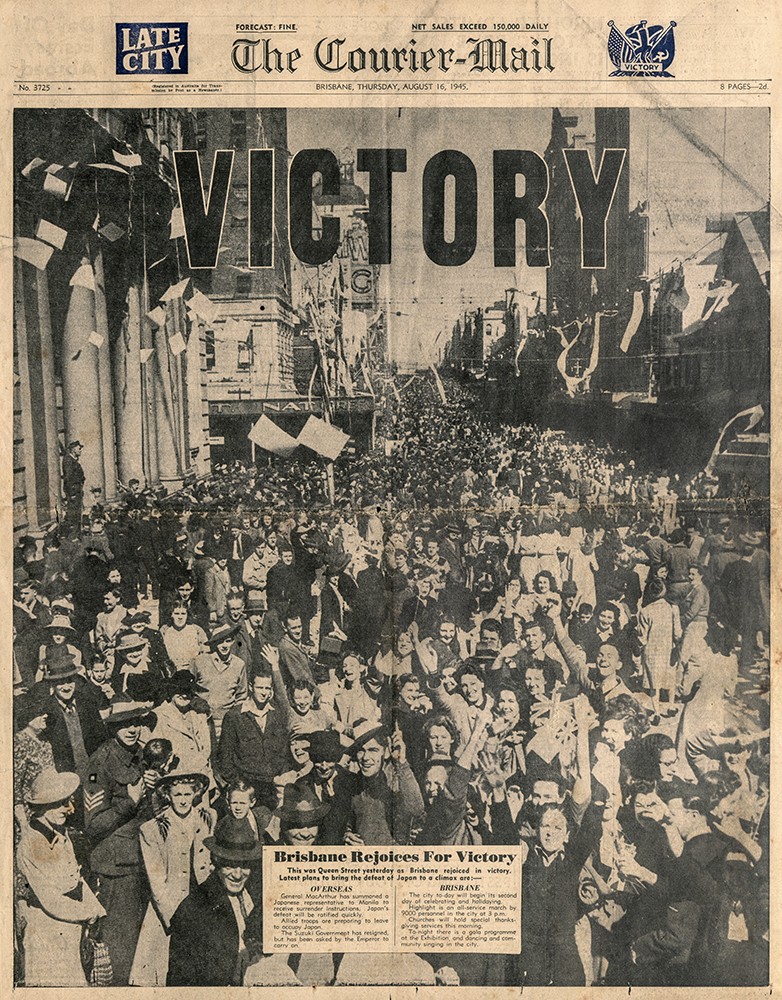
“Victory”, Front Page of The Courier-Mail, 16 Aug 1945, p.1.
The first VP Day was celebrated with jubilation as crowds filled streets in towns and cities across the nation, including at Anzac Square, to celebrate the much-anticipated end of the war. The Courier-Mail reported that Brisbane was filled with frolicking, jitterbugging, ragtime bands, people banging pots, blowing whistles, firing flares, soldiers playing two-up (until the police moved them on), kissing competitions (the winners lasted more than seven minutes) and “pandemonium” reigned. There were “showers of confetti”, and when the sun set, searchlights lit up the city, by which time the city was “delirious on peace night”.
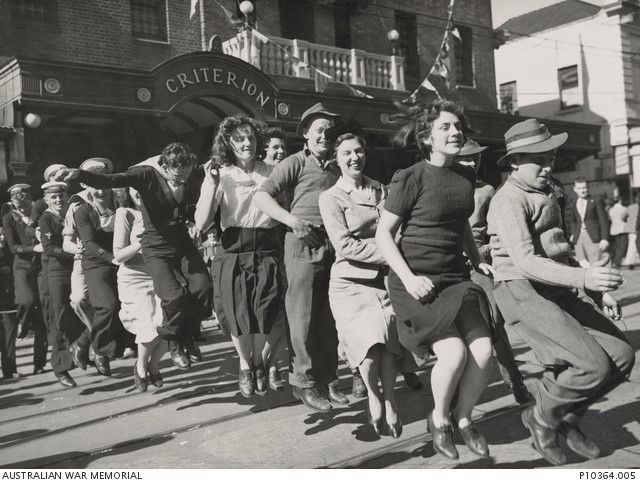
“Skipping in George Street”, from collection of Sergeant Clifford Vernon James Potter, Australian War Memorial, P10364.005.
While celebrations on 15 August 1945 were largely spontaneous, the following day (another public holiday) there were equally joyous but more formal events, with 9,000 personnel parading through King George Square and Brisbane streets before 60,000 onlookers, amid tonnes of paper streamers. Similar celebrations and parades occurred across Queensland (and Australia, the Pacific and the US too). There were also concerts and church services. The peace parties lasted for days.
And in fact “peace” not “victory” was the headline on at least two other local newspapers on VP day.
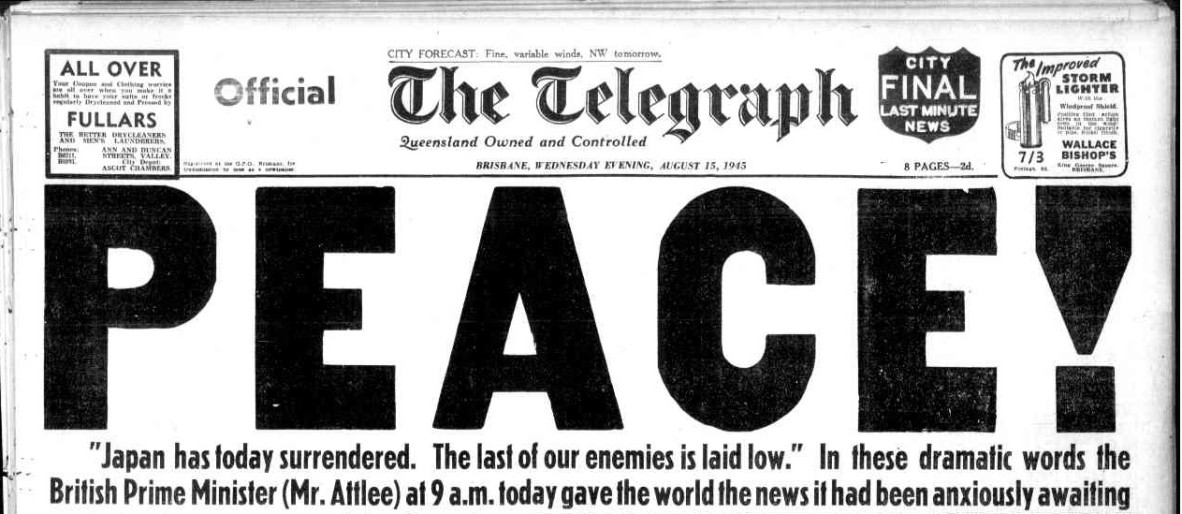
“Peace!”, Front page of The Telegraph, 15 Aug 1945, p.1.
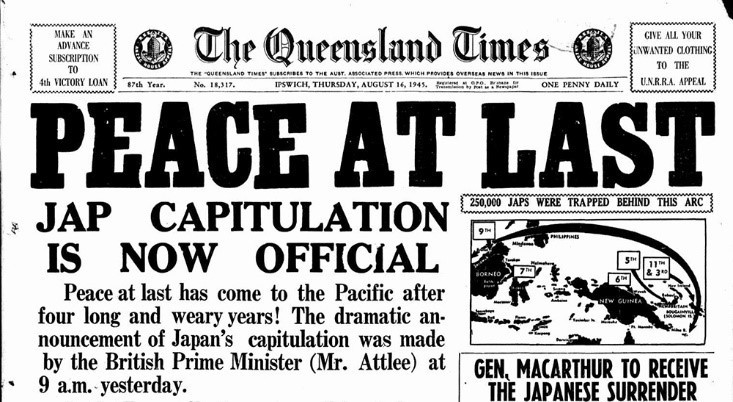
“Peace At Last”, Front Page of The Queensland Times, 16 Aug 1945, p.1.
During the six long years of WWII, more than a million Australians served in the armed forces and all Australians had experienced unprecedented upheaval, under the shadow of enemy invasion and against a war-torn backdrop of social and political discord on a truly global scale. Across Queensland, and in Brisbane especially, the landscape of daily life had undergone a transformation: Australians faced rationing of food, clothing and other essentials, brownouts and curfews, rapid changes in employment and social roles, schooling routines and recreation, and an estimated one million Americans had passed through our state during the war, shifting our sense of national identity and traditional international allegiances.
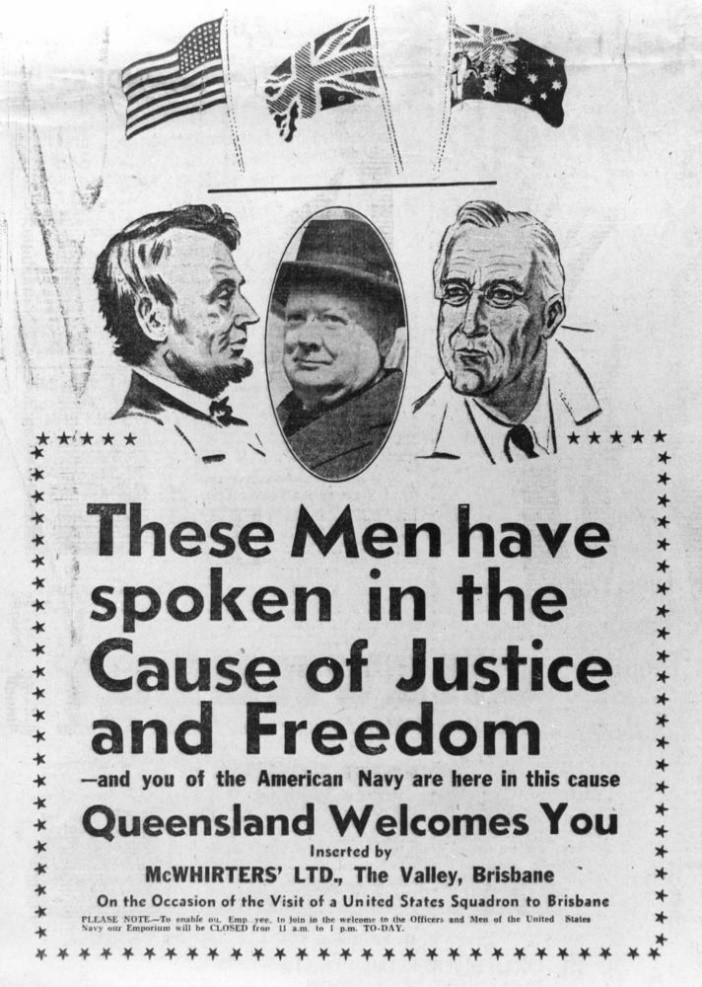
Advertisement on the occasion of the American naval squadron visiting Brisbane, from The Telegraph, 25 Mar 1941 p. 4, State Library of Queensland, Negative No. 158507.
Of course, the greatest impact was felt by those who had lost loved ones, in combat, in service, as POWs and even civilians killed under attack on Australian soil. Some would have found it impossible to cheer on VP Day, but for most there was at least relief that war was over.
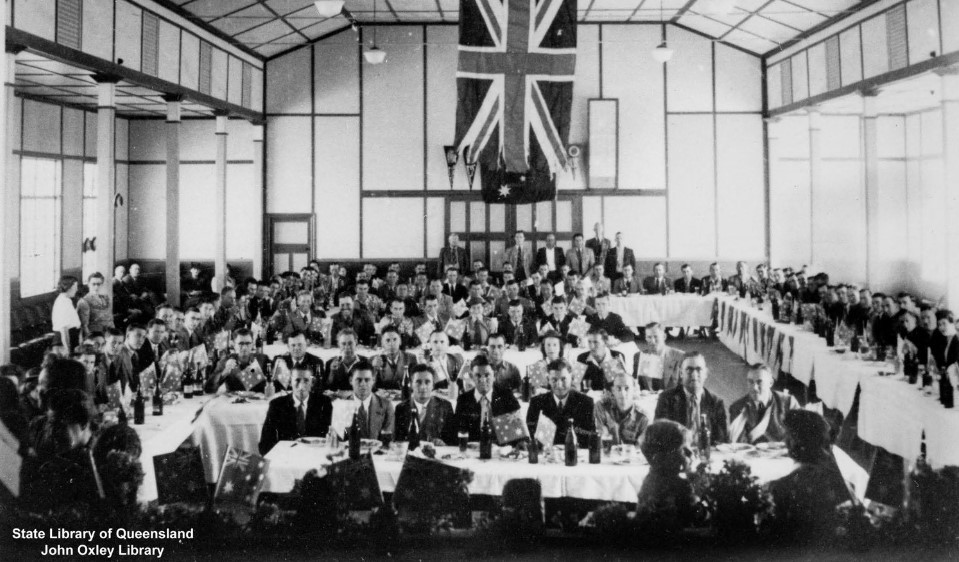
Official gathering of men and women after World War Two at Blackall, Queensland, State Library of Queensland, Negative No. 89943.
Today VP Day remains an occasion to commemorate all those Australians who served and died in WWII, and especially those who served and fought in the War in the Pacific. This year, State Library of Queensland has created a variety of resources to look back on the years of commemorations, cavalcades and camaraderie, designed to help you commemorate at home, online, on-the-go and in person.
The Anzac Square Memorial Galleries, which are normally closed on Saturdays will be open special hours this VP Day—from 10am to 2pm—to accommodate those wishing to commemorate onsite.
With a little help from voice assistants Amazon Alexa and Google Assistant you can be transported back in time, to listen to the oral histories and diaries of past and present serving members of the Australian armed forces. These moving stories commence with letters and diary extracts written around the end of the Second World War. You can also use VP Day Stories to request a poppy be laid at the Anzac Square Memorial Galleries on your behalf, play the Last Post and be guided through a minute’s silence. Get started by simply saying “launch VP Day Stories” to your voice assistant.
Moving images and film from World War II can also be accessed via State Library’s interactive online tool, Explorer. The tool allows you to delve into World War II images and film, tag and describe photos, and share your own stories and images. This is an exciting opportunity to contribute to the story of Queensland.
To find out more about what the Anzac Square Memorial Galleries has to offer visit our website https://www.anzacsquare.qld.gov.au/ or email our team anzacsquare@slq.qld.gov.au
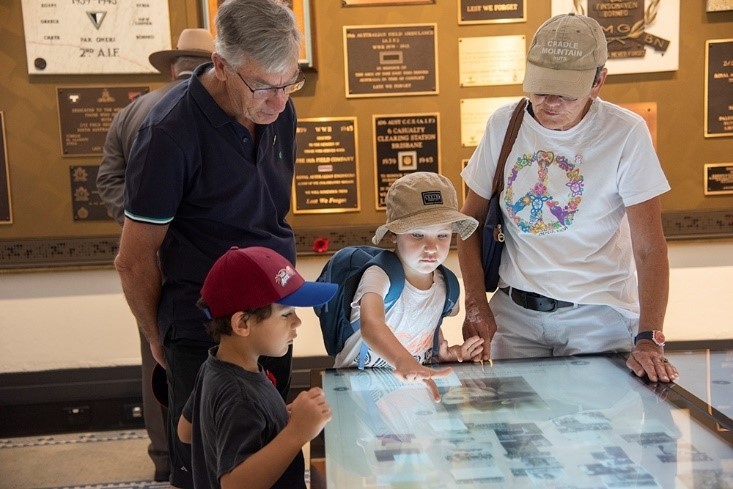
Visitors exploring the collection at Anzac Square, Remembrance Day 2019.
Lest we forget.
ADDITIONAL RESOURCES:
Links to listen to some personal stories:
Anzac Stories voice activation
This Story : World War, 1939-1945 documentary series
Images:
7949 Sergeant Miller scrapbook and album 1942 – 1945
Blogs:
The War Diaries of Nurse Taylor
From Brisbane trainee nurse to U.S. war bride: the diary of Elvie Geissmann
New Accession: Patricia Ward (nee Meadows) Papers, 1942-1986
WWII American Servicemen in Australia: The known and unknown
More information
Anzac Square Memorial Galleries - https://www.anzacsquare.qld.gov.au
Explorer - http://explorer.slq.qld.gov.au
One Search - http://onesearch.slq.qld.gov.au/
Ask us - /plan-my-visit/services/ask-us
Library membership - /get-involved/become-member
Comments
Your email address will not be published.
We welcome relevant, respectful comments.